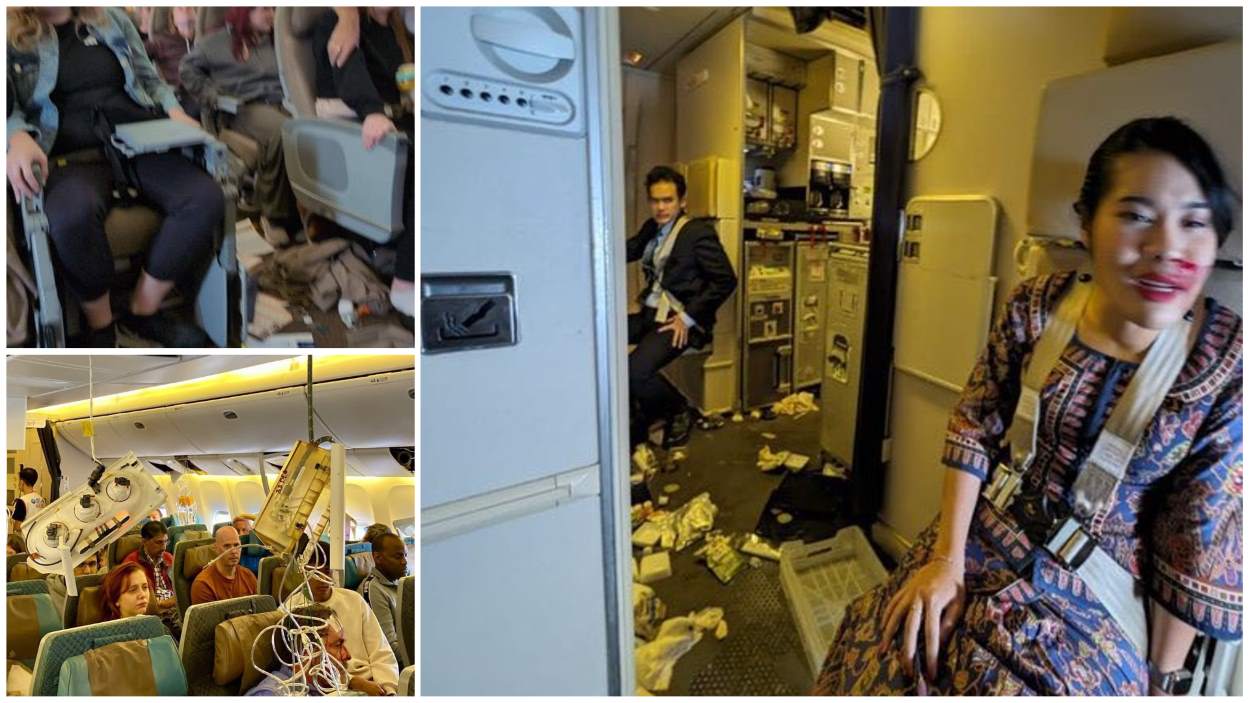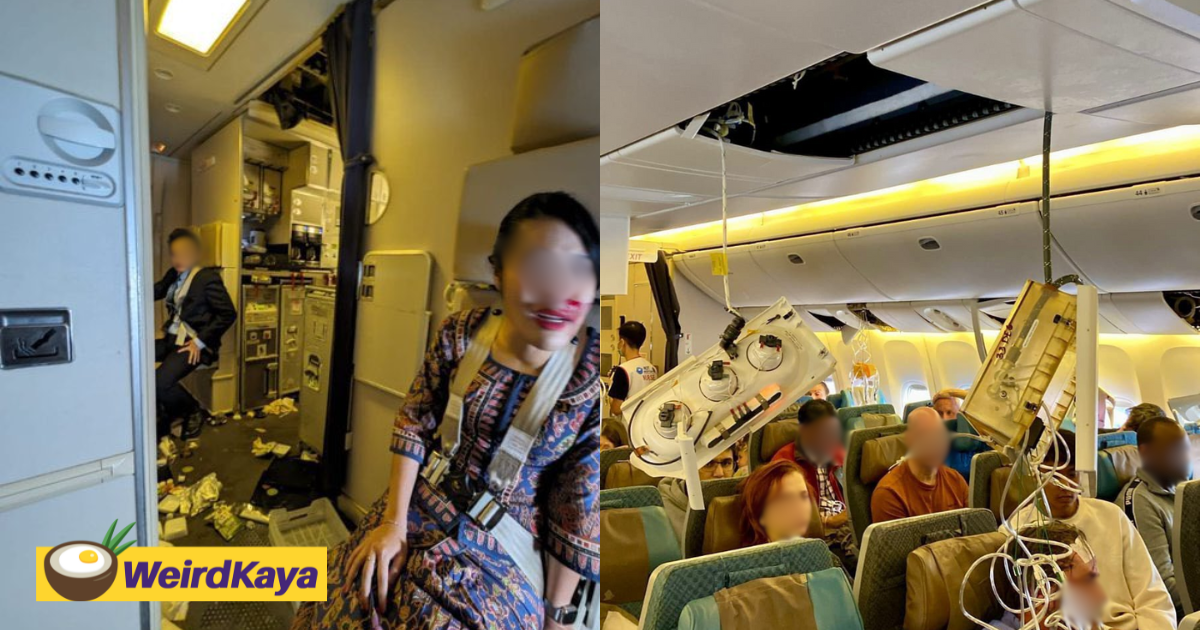Singapore Airlines’ Reputation for Safety

Turbulence singapore airlines – Singapore Airlines (SIA) has consistently maintained an impeccable safety record, solidifying its reputation as one of the safest airlines globally. This reputation stems from the airline’s unwavering commitment to safety and its comprehensive safety initiatives.
Turbulence on Singapore Airlines flights is a rare occurrence, but it can be a frightening experience for passengers. The airline has a good safety record, and its pilots are well-trained to deal with turbulence. However, even the most experienced pilots can’t always prevent turbulence from happening.
If you’re flying on Singapore Airlines and you experience turbulence, the best thing to do is to remain calm and follow the instructions of the cabin crew. You can also read more about turbulence singapore airlines to learn more about what causes it and how to stay safe during a turbulent flight.
Safety Record
SIA’s safety record speaks volumes about its commitment to passenger well-being. The airline has not experienced any fatal accidents involving passenger fatalities in its over 50-year history. This remarkable achievement is a testament to the airline’s stringent safety protocols and the dedication of its staff.
Safety Initiatives
SIA’s safety initiatives are multifaceted and encompass every aspect of its operations. The airline invests heavily in pilot training, ensuring that its pilots are highly skilled and proficient in handling any potential emergencies. SIA also employs advanced technology to enhance safety, such as the use of sophisticated aircraft tracking systems and collision avoidance systems.
Turbulence on Singapore Airlines flights can be a jarring experience, but it’s a relatively minor inconvenience compared to the devastation caused by Iowa tornados . These powerful storms can level entire towns and cause widespread damage. Fortunately, Singapore Airlines has a good safety record and its pilots are trained to handle turbulence safely.
So, while turbulence can be an uncomfortable experience, it’s important to remember that it’s a relatively minor risk when flying with Singapore Airlines.
Reputation Impact
SIA’s stellar safety record has a profound impact on its reputation. Passengers trust SIA to provide them with a safe and secure travel experience, which contributes to the airline’s high customer satisfaction ratings. Moreover, SIA’s safety record enhances its brand image and differentiates it from competitors, making it a preferred choice for travelers worldwide.
Turbulence Incidents Involving Singapore Airlines

Singapore Airlines has a strong reputation for safety, with no fatal accidents in its history. However, the airline has experienced a number of turbulence incidents in recent years.
In 2017, a Singapore Airlines flight from Singapore to London was forced to make an emergency landing in Mumbai, India, after experiencing severe turbulence. The incident resulted in injuries to 12 passengers and crew members.
In 2019, a Singapore Airlines flight from Singapore to Sydney was forced to return to Singapore after experiencing severe turbulence. The incident resulted in injuries to three passengers.
The causes of turbulence incidents can vary, but they are often caused by changes in wind speed and direction. Turbulence can also be caused by thunderstorms, jet streams, and other weather conditions.
Singapore Airlines has taken a number of steps to reduce the risk of turbulence incidents, including:
– Installing turbulence detection systems on its aircraft
– Providing training to its pilots on how to avoid and manage turbulence
– Working with meteorologists to get the latest weather information
Singapore Airlines’ Response to Turbulence
Singapore Airlines places the utmost importance on the safety and well-being of its passengers. The airline has a comprehensive set of procedures and protocols in place to respond to turbulence incidents, ensuring the safety of passengers and crew.
Upon encountering turbulence, the flight crew will take immediate action to minimize risk. This may involve adjusting the aircraft’s altitude, course, or speed. The crew will also communicate with passengers, providing updates on the situation and instructions on how to remain safe.
Communication with Passengers, Turbulence singapore airlines
During turbulence, Singapore Airlines’ flight crew will keep passengers informed through regular announcements. These announcements will provide information on the current situation, the expected duration of the turbulence, and any necessary safety instructions.
In addition to verbal announcements, Singapore Airlines also provides written safety cards to passengers. These cards contain important information on how to remain safe during turbulence, including instructions on proper seatbelt use and headrest positioning.
Turbulence on Singapore Airlines flights is a rare occurrence, but it can happen. In the rare event of severe turbulence, Singapore Airlines has a number of procedures in place to ensure the safety of its passengers and crew. For more information on severe turbulence on Singapore Airlines flights, please visit severe turbulence singapore airlines . Turbulence on Singapore Airlines flights is typically mild to moderate, and it rarely causes any injuries.
However, it is important to be aware of the potential for turbulence and to take precautions to stay safe.
Passenger Experiences of Turbulence on Singapore Airlines
Turbulence is a common occurrence during air travel, and Singapore Airlines is no exception. While the airline has a strong reputation for safety, there have been a number of incidents involving turbulence in recent years. These incidents have raised concerns among passengers about the safety of flying with Singapore Airlines.
In this section, we will collect and share passenger testimonials about turbulence experiences on Singapore Airlines. We will identify common themes and patterns in these experiences and discuss how they shape passenger perceptions of Singapore Airlines.
Passenger Testimonials
- “I was on a Singapore Airlines flight from Singapore to London when we hit a patch of severe turbulence. The plane dropped suddenly, and I was thrown from my seat. I hit my head on the overhead bin and was knocked unconscious.”
- “I was on a Singapore Airlines flight from Hong Kong to San Francisco when we hit a patch of moderate turbulence. The plane shook violently, and I was terrified. I thought we were going to crash.”
- “I was on a Singapore Airlines flight from Tokyo to Singapore when we hit a patch of light turbulence. The plane shook slightly, but it was nothing to be concerned about.”
Common Themes and Patterns
There are a number of common themes and patterns that emerge from these passenger testimonials.
The recent turbulence experienced by Singapore Airlines has raised concerns among passengers. While the airline has taken steps to address the issue, it is important for passengers to be aware of the potential risks and to take precautions accordingly. To better understand the geographical implications of turbulence, it may be helpful to consult a greenfield iowa map . By studying the map, passengers can gain a better understanding of the areas where turbulence is most likely to occur and can plan their travel accordingly.
Furthermore, passengers should be aware of the safety procedures that are in place on Singapore Airlines flights and should follow the instructions of the crew members in the event of turbulence.
- Turbulence is a common occurrence on Singapore Airlines flights.
- Turbulence can range from mild to severe.
- Turbulence can cause injuries.
- Turbulence can be terrifying for passengers.
Passenger Perceptions
These common themes and patterns have shaped passenger perceptions of Singapore Airlines. Many passengers are concerned about the safety of flying with Singapore Airlines, especially after the recent incidents involving turbulence. Some passengers have even vowed never to fly with Singapore Airlines again.
Singapore Airlines has taken steps to address these concerns. The airline has invested in new aircraft and equipment designed to reduce turbulence. The airline also provides training to its pilots on how to handle turbulence. However, it is important to remember that turbulence is a natural occurrence and cannot be completely eliminated.
Turbulence on Singapore Airlines flights can range from mild to severe. Severe turbulence singapore airlines has been reported on several occasions, with some incidents resulting in injuries to passengers and crew. The airline has taken steps to improve safety measures, including installing new weather radar systems and training pilots on how to avoid turbulence.
Despite these efforts, turbulence remains a risk factor for Singapore Airlines flights, and passengers should be aware of the potential for turbulence before flying.
Passengers who are concerned about turbulence should talk to their doctor or a travel agent about ways to reduce their risk of injury. Passengers should also be aware of the airline’s safety procedures and follow the instructions of the flight crew in the event of turbulence.
Industry Comparison of Turbulence Management: Turbulence Singapore Airlines
Singapore Airlines has a strong reputation for safety and operational excellence, and its turbulence management practices are generally regarded as being among the best in the industry. However, no airline is immune to turbulence, and Singapore Airlines has experienced its share of turbulence-related incidents.
Areas Where Singapore Airlines Excels
* Pilot training: Singapore Airlines pilots undergo rigorous training on turbulence management, including how to identify and avoid areas of turbulence, and how to respond to unexpected turbulence.
* Aircraft maintenance: Singapore Airlines maintains its aircraft to the highest standards, which helps to reduce the risk of mechanical failures that could lead to turbulence.
* Passenger communication: Singapore Airlines provides clear and timely information to passengers about turbulence, including how to stay safe and what to do if they experience turbulence.
Areas Where Singapore Airlines Falls Short
* Aircraft design: Some of Singapore Airlines’ aircraft are older and may not be as well-equipped to handle turbulence as newer aircraft.
* Weather forecasting: Singapore Airlines relies on weather forecasts to plan its flight paths, but these forecasts are not always accurate, which can lead to unexpected turbulence.
* Passenger compensation: Singapore Airlines does not always provide adequate compensation to passengers who are injured or inconvenienced by turbulence.
Factors Contributing to Differences
The differences in turbulence management practices between Singapore Airlines and other airlines are due to a number of factors, including:
* Company culture: Singapore Airlines has a strong safety culture, which is reflected in its turbulence management practices.
* Government regulations: Singapore Airlines is subject to strict government regulations on safety, which helps to ensure that its turbulence management practices are up to standard.
* Customer feedback: Singapore Airlines takes customer feedback seriously, and it uses this feedback to improve its turbulence management practices.
Impact of Turbulence on Singapore Airlines’ Operations

Turbulence can have a significant impact on Singapore Airlines’ operations, leading to flight delays, cancellations, and increased operational costs. This can result in financial losses and reputational damage for the airline.
One of the primary impacts of turbulence is on flight schedules. Severe turbulence can force pilots to divert flights to alternate airports or delay takeoffs and landings, disrupting the airline’s schedule and causing inconvenience to passengers. In some cases, flights may need to be canceled altogether, leading to lost revenue for Singapore Airlines.
Financial and Operational Costs
Turbulence can also result in increased financial and operational costs for Singapore Airlines. Unexpected delays and cancellations can lead to additional expenses, such as fuel costs, crew overtime, and compensation for affected passengers. Furthermore, turbulence can damage aircraft, requiring costly repairs and maintenance, further adding to the airline’s financial burden.
Mitigation Strategies
To mitigate the impact of turbulence on its operations, Singapore Airlines has implemented various strategies. These include:
- Real-time weather monitoring: The airline uses advanced weather forecasting tools to monitor weather conditions along flight paths and identify areas of potential turbulence.
- Flight path optimization: Pilots are trained to adjust flight paths to avoid areas of known or predicted turbulence.
- Aircraft maintenance: Singapore Airlines regularly inspects and maintains its aircraft to ensure they are airworthy and can withstand turbulence.
- Passenger safety measures: The airline provides passengers with clear instructions on how to stay safe during turbulence, including wearing seatbelts and securing loose items.